Project Description
Microservices Provide Flexibility, Efficiency for Web App
Part 2 – Equipment Leasing and Financing Company Benefits from Microservice Architecture
A brand-new Broker Portal web app has breathed new life into our client’s equipment leasing and financing lifecycle. In Part 2 of our success story series, we will explore how Chateaux used microservice architecture to eliminate productivity roadblocks and reduce overhead using Azure serverless functions built in .NET framework using C#.
Share This Story
The Challenge
Disconnected systems created barriers that hindered the deal lifecycle
The Result
Microservices enable all users to input and receive data quickly and effectively in a single platform while maintaining privacy, lowering license costs, and making independent modules easier to service
Features & Highlights
Reduced costs, by eliminating unnecessary product licenses
Improved efficiency, thanks to CRM, data layers, and APIs connected in an all-in-one web app
Faster results, by reducing manual data entry and improving data access while retaining privacy and security
The Challenge
Our leasing and financing client serves customers in construction, healthcare, refrigeration, and other industries requiring large equipment. In part one of our success story series, we discussed how the client needed an enhanced method for brokers to apply for equipment leasing and financing on behalf of prospective customers and how Chateaux’s Digital Transformation Team created the web app that optimized the business flow using visualizations and custom assets built with React.js and webpack. (See part 1 to learn how the Digital Transformation team created the UI behind the new Broker Portal web app.)
In part two of our series, we will explore how Chateaux used microservice architecture to support the Broker Portal.
Our equipment leasing and financing client uses Salesforce as a single source of record for business transactions such as new loan applications and equipment financing options. Traditionally, the client’s business users would login into Salesforce to access information and perform their daily tasks. This was becoming costly because of the large quantity of individual licenses required. The client sought a solution that would reduce this expense.
The client also wanted to hand off some data entry work to the brokers. As third-party users, brokers did not have direct access into the client’s Salesforce CRM; instead, they were expected to submit their data through the existing Broker Portal system. But the existing Broker Portal was not working, leading many brokers to email loan application details and documents to the client’s business users, who would then need to manually enter this information into Salesforce. This process not only delayed progress but created more instances of manual errors within documentation. The client wished to provide data input functionality to the brokers so they could submit their applications online through a website that would inject their data directly into the client’s database.
Following a thorough evaluation, Chateaux determined that an overhauled, all-in-one version of the Broker Portal web application would fulfill the client’s needs. The team also recognized opportunities where other third-party systems, which are also part of the deal lifecycle, could be brought into the new business flow, creating a more streamlined application lifecycle.
The Approach
In order to capture data from the Broker Portal web application into Salesforce, Chateaux’s microservices experts created a Data API layer on top of Salesforce that allows the website data to directly integrate into the client’s CRM. This eliminates the need for multiple costly licenses because access is now available via one integration account from a web application. This also works as a security layer within the platform. The Data API provides controlled access to the Salesforce data, giving each Broker the ability to view and change only the data points they are authorized to access.
To accomplish this capability, microservices were built on top of the Data API. These microservices include several Azure functions that leverage the functionality of Data API and also include microservice integrations into different third-party systems which are not married, such as Experian for credit report checks and DocuSign for e-signatures. Now, the client can request or receive credit reports or signed documents without having to go through Salesforce by calling on the microservice to perform the operation. Once the operation is triggered, the data is, in turn, sent to Salesforce automatically. Separate microservices now act as conduits that help deliver the data between each triggered event.
Each microservice was planned and architected individually, since each microservice should function on its own. All microservices were created as Azure serverless functions built in .NET framework using C#. Each microservice powers the separate operations available on the Broker Portal web app, some of which are referred to as micro frontends.
More microservices continue to be created using a phased approach. This is possible due to the independent nature by which microservices are built, having no impact on the rest of the portal as work is being completed. It is also why the application runs so fast.
The Result
Microservices allow all users to input and receive data in a single platform quickly and effectively while maintaining privacy and lowering license costs. With microservices, any application can be built and integrated into the Broker Portal web application. This includes existing systems that brokers may use on their own. Microservices provide flexibility that allows greater customization that doesn’t bind a solution to one specific type of technology. They can also be maintained independently of the main app, allowing maintenance is quicker, lower cost, and less complicated. The scalable solution provides a more fluid process for business users and brokers.
The client’s Broker Portal web now includes microservices to support a variety of functionalities, including but not limited to the following APIs:
- Data Access API, for core functions to access Salesforce data
- An e-signature application
- A consumer credit check tool
- A document completion application
- A payment gateway
- A risk mitigation tool
- Loan terms, parameters, and options determination tool
About the Client
The client is a large/heavy equipment financing company providing small businesses and sole proprietorships with the financing they need to purchase essential use operating assets. The client works with third-party referral (TPR) broker sources across the USA to finance commercial leases and loans ranging from $15k to $300k in value. The company works with A to C credits, finances many types of assets, and is an “application only” lender.





